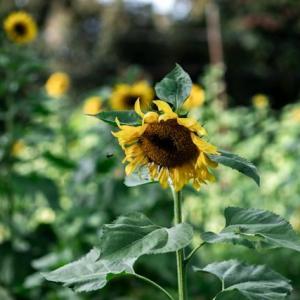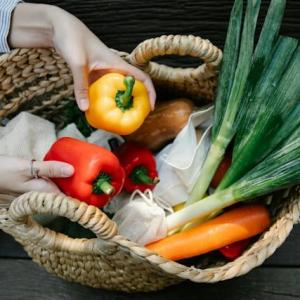

You should really be able to grow plants even if you reside in a small flat. In addition to common houseplants, an apartment garden may support a variety of herbs, fruits, and vegetables. When you're just learning how to plant, start with a few small pots. Considerations like sunlight exposure and the overall weight of your containers must be made. Here's how to create a beautiful apartment garden.


 There isn't usually a ton of room available in apartments for gardening. However, there will inevitably be a sunny spot where you may exercise your green thumb and sample the results of your effort.
There isn't usually a ton of room available in apartments for gardening. However, there will inevitably be a sunny spot where you may exercise your green thumb and sample the results of your effort.
Apartment Plant Growing Instructions
All plants have certain growth conditions that must be fulfilled, while some are more resilient and forgiving to novice gardeners than others. When selecting plants for your apartment garden, keep the following factors in mind: 1. Soil Water, oxygen, and nutrients are all provided for plants by their soil. You can't use regular garden soil since it would clump in pots, restricting access to oxygen and preventing water from flowing through. This is because your apartment garden will probably incorporate containers. Consequently, a potting mix that drains effectively is required. Potting mix is airy and light, effectively moving oxygen and water to maintain healthy roots. You won't need to be concerned about bringing illnesses or bugs into your flat since it is reasonably sanitary. 2. Water Container plants need a lot of water, often many times each day. So choose a location for your container garden that is close to a water source. Carrying watering cans can get tiresome, particularly if you need to water many containers at once. If your arrangement allows it, think about getting a hose that can be connected to a sink faucet. When you need it, it is convenient, and when you don't, it coils up. 3. Sunlight The majority of blooming and fruiting plants need a full day of sunlight. This translates to six to eight hours of direct sunlight each day. Especially in a city where towering buildings might obstruct the sun for at least part of the day, this can be difficult to find in an apartment. The greatest chances of getting full sun are on balconies and roofs. If you're planting on a windowsill, you have two options: either choose plants that don't need as much light, like certain herbs and salad greens, or add a grow light to simulate the sun's rays. 4. Humidity When the heat is on, you may need to add some additional humidity if you are growing your plants inside on a ledge. You may either put the plants on a tray of water or spritz them with a light mist to aid. 5. Wind Your plant pots may need additional protection if your plants will be exposed to strong winds, particularly if they will be on a rooftop or balcony. Wind has the power to rip apart foliage and topple pots. So make a wind barrier available, such a screen or railing. Alternately, make sure your pots are large and substantial enough to secure the plants. 6. Weight Although soil-filled containers are already heavy, their weight might increase by three times when they are saturated with water. Make sure the position of your apartment's garden can support the weight. It will be necessary to fasten window boxes to the windowsill. Additionally, find out if there are any weight limitations from your landlord or the building board if you're gardening on a balcony or rooftop.
Suitable Plants for Apartments
To a certain degree, almost every plant may be grown in a container. A full-sized apple tree, for instance, would not be feasible, but there are thin columnar types that can fit in a one-square-foot section of your balcony. After considering the foods you love eating, choose a few different plant varieties to try out. You may begin with seeds, which are more diverse and less expensive. However, young nursery plants will help your garden get started faster. 1. Herbs: Many herbs perform well in containers, but they won't become as big and bushy as they would if they were planted in the ground outside. Additionally, if you harvest regularly, you may need to replace your plants. But having access to fresh herbs while cooking is amazing. Mint, chives, parsley, lavender, basil, thyme, and other herbs are some of the best plants for apartment gardening. lettuce greens Favorite salad ingredients like lettuce, spinach, and arugula are shallow-rooted, quickly growing plants. If they have enough water, they aren't too picky about their growth circumstances. 2. Tomatoes: Although tomato plants may become bulky and heavy, they thrive in containers. They will thrive in a container with a minimum diameter of 14 inches, however bigger is preferable. The patio varieties may be grown in a hanging basket. Make careful you choose a determinate or dwarf tomato variety. 3. Chili peppers: If you like spice, hot pepper plants do extremely well in containers and may produce fruit all year long. Sweet peppers may also be grown in containers, although they normally don't perform as well as hot peppers. 4. Meyer lemons: Dwarf citrus trees are among the simplest fruits to cultivate in a container. If they get six to eight hours of direct sunlight each day combined with some humidity, meyer lemons thrive inside. Lemon trees emit a sticky sap, so place something beneath the pot to protect your floors and furnishings. 5. Strawberry: A window box filled with strawberries is both aesthetically pleasing and appetizing. For the greatest fruit, strawberry plants typically need at least six hours of sunlight every day and continuously damp (but not soggy) soil.
Garden Care for Apartments
You may anticipate doing the following duties on a regular basis in your apartment garden: Watering is by far the most crucial gardening chore. Even if rain falls on your garden, there most likely won't be enough water. As your plant develops, the dirt in containers dries up rapidly. Use your finger to probe the dirt about an inch or so below the surface. It needs watering if it seems dry. 1. Feeding: In accordance with each plant's specific growth needs, you must feed your plants on a regular basis. The simplest technique is often to apply a water-soluble fertilizer when you water. Inspect your potting mix to see whether it contains fertilizer; if it does, you won't need to feed your plants as often. 2. Problems: No matter where you cultivate plants, pests and illnesses will eventually find them, and there are no natural predators for insects inside. Every time you water or harvest your plants, check them for issues. Move a plant away from the other plants until the issue is fixed if you see evidence of pests or illnesses, such as discoloration or holes in the leaves. 3. Harvesting: Find out when your particular plants are ready to be picked, and then don't put off enjoying the rewards of your toil. In certain circumstances, harvesting encourages the plant to grow more food that you can collect. There isn't usually a ton of room available in apartments for gardening. However, there will inevitably be a sunny spot where you may exercise your green thumb and sample the results of your effort.
There isn't usually a ton of room available in apartments for gardening. However, there will inevitably be a sunny spot where you may exercise your green thumb and sample the results of your effort.
文章
sososo赞了

共2条评论


sososo
2022年07月18日
0
wow!I just saw this article when I was about to grow some flowers.😍

atastybellpepper
2022年07月18日
0
Great article








